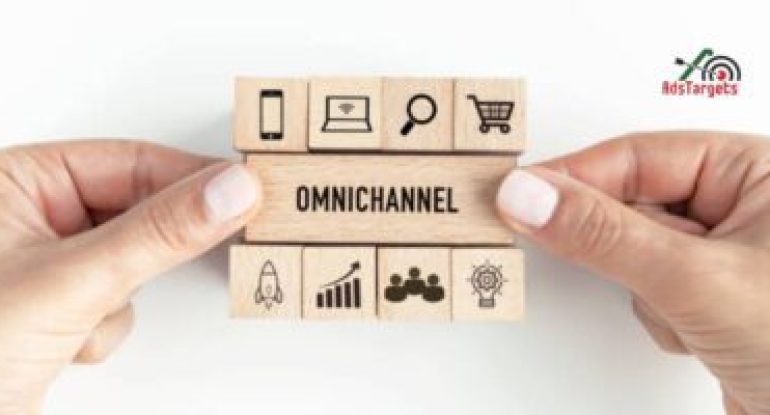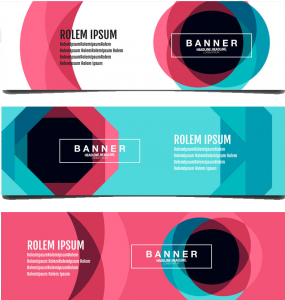Ever wondered how brands seem to follow you across different platforms, like they just know what you’re looking for? That’s omnichannel marketing in action—seamlessly connecting with customers wherever they prefer, whether it’s in-store, online, via text, or on social media.
See it this way, You’re scrolling through an online store, adding some sleek work outfits to your cart, but for whatever reason, you don’t hit the checkout button. A few hours later, bam! You spot an ad for the exact outfit on your Instagram feed. Coincidence? Not at all. That’s omnichannel marketing strategies working behind the scenes, keeping brands in sync with your shopping habits.
Now, let’s break it down. The word “omni” means “all,” and “channel” refers to the different ways customers interact with brands—whether that’s browsing in-store, surfing the web, engaging on social media, or receiving personalized emails and SMS reminders. The goal? To create a smooth, connected experience that aligns with customer preferences, making their journey effortless and frustration-free.
Here’s the thing—today’s shoppers aren’t sticking to just one channel. They bounce between physical stores, mobile apps, and websites, sometimes all in a single transaction. Some crave hands-on customer service, while others want quick, no-fuss, 24/7 solutions. That’s why smart omnichannel marketing strategies focus on integration—giving customers multiple ways to interact while guiding them to the best, most efficient solution.
And the numbers don’t lie. More than half of B2C customers engage with three to five channels per purchase. Hotel bookings? People switch between websites and mobile apps nearly six times before making a reservation. If brands drop the ball—offering inconsistent info, clunky navigation, or a disjointed experience—shoppers bounce fast.
The real magic? Omnichannel customers shop 1.7 times more than single-channel shoppers and spend way more cash. That’s why brands are investing heavily in omnichannel marketing, not just for sales, but also for customer service, supply chains, and the overall shopping experience. From personalized recommendations to frictionless checkout options, it’s all about meeting customers where they are and keeping them engaged.
So, if your brand isn’t already tapping into omnichannel marketing strategies, you might be leaving serious money on the table.
Table of Contents
ToggleWhat’s the Deal with Omnichannel Marketing?

Omnichannel marketing is all about keeping things smooth and connected—blending branding, messaging, and every customer touchpoint (online and offline) into one seamless experience. No matter where a customer interacts with your brand—whether it’s scrolling on social media, chatting with customer service, or visiting your store—the experience should feel effortless and consistent from start to finish.
Now, here’s where it gets interesting. Unlike old-school marketing that treats each channel as a separate entity, omnichannel marketing strategies focus on the customer first—not the platform. Today’s shoppers don’t just stick to one channel. They jump from Instagram ads to email promos, from a website visit to a physical store, and back to an app—all before making a purchase. That’s why brands need to stay in sync across every touchpoint.
What Makes Omnichannel Marketing Stand Out?

For an omnichannel marketing strategy to actually work, a few key things need to be in place:
✅ A consistent brand vibe – Your brand’s voice, message, and look should feel the same no matter where customers interact with you. Whether it’s a TikTok ad, a website banner, or an in-store experience, everything should scream you.
✅ Personalized experiences – People want to feel seen by brands. The best omnichannel marketing strategies use customer data to tailor messaging—whether it’s product recommendations, targeted discounts, or content that speaks directly to their interests.
✅ Smart content that adapts – If a customer has been eyeing a product but hasn’t checked out yet, your ads and emails should reflect that. Every interaction should feel like a natural progression, not a repetitive sales pitch.
At the end of the day, omnichannel marketing is all about creating a shopping experience that feels effortless, engaging, and personal. When brands do it right, customers stick around longer, engage more, and buy more. And in today’s digital world, that’s the secret sauce to winning.
Omnichannel vs. Multichannel: What’s the Real Difference?
A lot of people mix up multichannel and omnichannel marketing, but let’s set the record straight—they’re not the same thing. Sure, both are about engaging customers across multiple platforms, but the key difference lies in how connected the experience feels.
With multichannel marketing, the focus is on pushing content and ads through as many platforms as possible—social media, emails, websites, print, in-store, you name it. Each channel does its own thing, and the customer decides where to interact. But here’s the catch: these channels often work in silos, meaning what happens on one platform doesn’t necessarily sync with the others.
On the flip side, omnichannel marketing strategies take things to the next level. Instead of treating each platform as a separate entity, everything is seamlessly connected. The customer journey isn’t just about choosing a channel; it’s about flowing smoothly across multiple channels without friction.
Breaking It Down Further:
Multichannel Marketing – The Basics
✔️ Spreads content and ads across different platforms
✔️ Gives customers multiple options to engage with a brand
✔️ Each channel operates independently—little to no connection between them
✔️ Focuses more on the company’s operations than the customer’s journey
Think of multichannel like having a bunch of separate doors customers can walk through—but once they pick one, they’re stuck on that path without much interaction from the others.
Omnichannel Marketing – The Upgrade
✔️ Uses multiple channels, but connects them all into one seamless experience
✔️ Keeps track of past interactions and adapts messaging based on customer behavior
✔️ Makes transitions between channels smooth and intuitive
✔️ Focuses entirely on the customer journey, not just where ads appear
With omnichannel marketing strategies, a customer can browse products on their laptop, get a personalized email about what they left in their cart, then walk into a store where a sales associate already knows what they were looking at online. It’s one fluid journey, not a bunch of disconnected steps.
Why Omnichannel Marketing Wins
At the end of the day, omnichannel marketing isn’t just about being everywhere—it’s about making sure customers don’t feel like they’re starting from scratch every time they switch platforms. It’s more personal, more efficient, and ultimately, more profitable.
Brands that master omnichannel see higher engagement, better retention, and customers who actually enjoy shopping with them. And in today’s world, where people bounce between devices and platforms all day long, that’s the kind of experience that keeps them coming back.
Why an Omnichannel Approach is a Must for Brands?

These days, brands that don’t embrace omnichannel marketing are missing out—big time. Customers are constantly bombarded with ads, emails, and promos, and let’s be real, they’ve become picky about which brands they actually vibe with. That’s where omnichannel marketing strategies come in.
Yeah, setting up a true omnichannel experience isn’t exactly a walk in the park, but when done right, it’s a game-changer (oh wait, scratch that—let’s just say it’s a big freaking deal). It helps brands stand out, keeps customers engaged, and boosts sales like crazy. Here’s why:
#1. A Smoother, More Personalized Customer Experience
Forget the days of clunky, disconnected brand interactions. Omnichannel marketing is all about creating a smooth, personalized experience across every touchpoint—whether that’s a website, mobile app, social media, or in-store visit.
Instead of just throwing ads at customers and hoping they stick, omnichannel strategies focus on the person, not just the platform. This means brands can track how customers interact, what they’re interested in, and serve them relevant content at the right time. The result? A better, more natural experience that makes people actually want to stick around.
#2. A More Recognizable, Cohesive Brand
Ever follow a brand on Instagram, see their website, then walk into their store and feel like you’re dealing with three different companies? That’s what happens when a brand doesn’t have an omnichannel strategy in place.
Omnichannel marketing strategies create a consistent brand voice, tone, and identity across all channels. This makes your brand more recognizable and helps build trust. And when customers feel that sense of familiarity? They’re way more likely to stick with your brand long-term.
#3. More Engagement = More Sales
A brand that connects with customers through multiple touchpoints has way more chances to convert than one that relies on a single channel. Research even backs this up—customers who engage with multiple brand touchpoints spend 30% more than those who don’t.
And here’s the real kicker: repeat customers—those loyal folks who keep coming back—make up about 40% of revenue for most brands. So if you’re keeping them engaged across multiple channels, you’re boosting retention, driving more sales, and stacking those profits.
#4. Smarter Data = Smarter Marketing
Want to know which campaigns actually work and which ones are just burning cash? Omnichannel marketing isn’t just about improving the customer experience—it also gives brands killer insights into what’s working and what’s not.
By tracking engagement across different platforms, you get a full picture of the customer journey—what catches their attention, what makes them bounce, and what finally convinces them to buy. This data helps optimize ad spend, fine-tune marketing strategies, and build campaigns that actually convert.
At the end of the day, omnichannel marketing isn’t just an option—it’s a necessity if you want to stay ahead. Customers expect seamless, connected experiences, and brands that fail to deliver will end up losing to the ones that do.
So, if you’re serious about boosting engagement, strengthening your brand, and increasing revenue, it’s time to go all in on omnichannel marketing strategies.
How to Build a Rock-Solid Omnichannel Marketing Strategy?

So you’re ready to dive into the world of omnichannel marketing—awesome choice! Whether you’re a massive brand or a growing eCommerce business, the benefits of launching a killer omnichannel marketing strategy are undeniable. We’re talking about higher order rates (like, 494% higher if you use 3+ channels!), better customer retention, and a super personalized experience that keeps your audience coming back for more.
But before you go full throttle, it’s crucial to build a strong foundation. You don’t want to rush into things and end up with a strategy that’s all over the place, right? So, here’s how to build a successful omnichannel marketing strategy step by step. Let’s kick it off.
#1: GET YOUR WHOLE TEAM ON THE SAME PAGE
First things first, an omnichannel marketing strategy isn’t just a job for the marketing team. Nope. If you want it to truly work, you need buy-in from the entire company. That’s because the success of this strategy depends on a unified approach where everyone is focused on enhancing the customer experience. Here’s how you do it:
#1. Engage the whole organization: Marketing can’t do it alone, so get everyone involved—from sales to customer support, to IT and beyond. Make sure every department knows their role in delivering an awesome omnichannel experience.
#2. Break down silos: It’s easy for departments to get stuck in their little bubbles, but with omnichannel marketing, that’s a no-go. You’ve got to foster open communication and collaboration between teams so everything flows smoothly across channels.
#3. Set a consistent brand message: Every team member needs to communicate the same message about the brand, no matter what channel they’re on. Whether it’s your customer service team talking to a shopper on Twitter or your sales team on the phone, consistency is key for brand recognition and creating a seamless experience.
#4. Focus on the customer experience: This is crucial—customer experience should be the priority for every team. Whether a customer is browsing your website, checking out your social media, or interacting with your support team, they should feel like they’re getting the same high-quality, personalized experience no matter where they engage with your brand.
Remember, omnichannel marketing strategies work best when everyone is aligned toward the same goal—making the customer’s journey smooth, personalized, and enjoyable at every touchpoint.
Why It Works
Think about it: when you get the entire company on board, it’s like having all gears working in sync. You’ll have your marketing efforts backed by strong data, your customer support teams knowing exactly where a customer left off in their journey, and your sales team able to offer relevant products based on the customer’s behavior across channels.
Plus, when teams work together, the customer data you gather is more likely to be accurate and useful, which helps with segmentation and personalization—two big pillars of a good omnichannel strategy. Like we mentioned earlier, if you get a 360-degree view of your customers, you’ll know exactly what they want and when they want it, which leads to more relevant messaging and ultimately, better conversion rates.
Before diving into omnichannel marketing, make sure your team is united under a shared focus on the customer experience. Once that’s in place, you’ll have a solid foundation to build your omnichannel approach, and it’s all uphill from there.
#2. ANALYZE YOUR CUSTOMER DATA

So if you’re serious about creating an omnichannel marketing strategy that actually works, the heart of everything you do should be customer data. You’ve got to know who your customers are, what they need, where they hang out, and what makes them tick. This is how you can level up your game and deliver personalized experiences that knock it out of the park.
The more your team knows about the customer, the better everyone can do their part in giving that customer the best possible experience. Sounds simple, right? But how do you actually get that 360-degree view of your customers? Let’s break it down.
#1. Walk in Your Customer’s Shoes
First thing’s first—experience your brand like a customer would. Seriously, go through the motions! Complete a purchase, dive into your social media channels, check out your website, and maybe even call customer support. Don’t just sit in your office assuming everything’s running smoothly. You’ll be surprised by what you might discover!
Also, it’s not just about what you think your customers want—it’s about seeing things from their perspective. If you’re in eCommerce, for example, is the checkout process as easy as it should be? Are you missing any important touchpoints? By doing this, you’ll spot any pain points and friction in your omnichannel journey that need fixing.
And here’s the kicker: Invite outsiders to give you their take. External evaluators can offer super unbiased feedback that’ll give you fresh insight into where you might be missing the mark.
#2. Build Customer Personas
Next, you’ll want to get a real understanding of your target audience. This means building out customer personas—detailed profiles that capture your audience’s needs, behaviors, preferences, and buying patterns. The more you know about your audience, the more you can tailor your omnichannel marketing strategies to suit their lifestyle.
For example, if you know that Persona A loves browsing on mobile devices but often completes purchases on desktop, you can optimize their mobile experience while ensuring the desktop checkout is quick and smooth. This helps you personalize interactions at each stage of the customer journey, from discovery to purchase.
#3. Get Cozy with Your Survey Data
Another goldmine for customer insights? Customer surveys. Whether it’s through email or pop-ups on your site, gathering customer feedback is like having a front-row seat to what’s working (and what’s not). After you collect survey responses, use analytics platforms to break it down. This helps you spot patterns, preferences, and pain points across different segments.
Let’s say a lot of people say they love your product but find it hard to navigate your website. That’s huge feedback! With the right insights, you can tweak your omnichannel approach by making your online store more intuitive or even offering personalized support on certain platforms.
#4. Analyze Customer Touchpoints Across Channels
It’s not just about collecting data—it’s about analyzing interactions across multiple touchpoints. In the world of omnichannel marketing, customers are constantly jumping between devices and channels. They might browse your website on their phone, ask questions on social media, and then finally make a purchase in-store. By mapping all these interactions, you can identify the best channels to engage customers at the right time.
This kind of cross-channel analysis helps you deliver the right message at the right moment—no matter where your customers are. Whether they’re on your site, social media, or via email, consistency and relevance are the key to boosting conversion rates and loyalty.
The bottom line? Data is your friend when it comes to refining your omnichannel marketing strategies. By analyzing customer feedback, understanding personas, and keeping a close eye on their behaviors, you can create a personalized experience that makes your brand stand out. And, the more personalized and seamless the experience is across channels, the more likely customers will keep coming back for more.
So, don’t just collect data—use it to build a solid omnichannel marketing approach that keeps customers happy, engaged, and loyal.
#3. CREATE CUSTOMER JOURNEY MAPS THAT ACTUALLY WORK
Alright, let’s get down to the nitty-gritty of one of the most important aspects of omnichannel marketing: customer journey maps. If you’re looking to level up your marketing game, understanding the customer journey is a must. Think of it like a roadmap that shows how your customers go from being total strangers to loyal buyers (and beyond).
Creating a customer journey map helps you see exactly how your customers interact with your brand at every step. Plus, it highlights where things might be going right—and where they could totally use some TLC. Let’s break it down into simple steps.
#1. Start With Customer Personas
Before you can map the journey, you need to know who you’re mapping it for, right? So, start with the customer personas you created earlier. These personas give you a real-deal understanding of your audience’s needs, wants, and pain points. Are you marketing to busy professionals? College students? Parents? Understanding their daily life, behaviors, and preferences is going to give you a solid base for building your journey map.
If you’ve done a great job on your personas, you’ll already have a pretty clear idea of who you’re talking to and what they need from your brand. Use these personas as your guide through every stage of the customer journey.
#2. Find Key Customer Interactions
Next up, list out all the ways customers interact with your brand—from the moment they hear about you to when they make a purchase and even after. These touchpoints could include:
Social media: Whether they’re liking your posts or sliding into your DMs, social media is huge.
Email: Did they sign up for your newsletter? What emails do they open? Which ones do they ignore?
Website: Are they browsing products? Adding items to their cart? Are they bouncing before checkout?
In-store visits: If you have a physical store, do they drop by after seeing your online ads or emails?
Every time a customer comes into contact with your brand, it’s a chance to connect and make an impact. The more touchpoints you identify, the more you can improve each one, making it seamless and more personal as part of your omnichannel marketing strategy.
#3. Dive Into Customer Feedback
Here’s where you get some real insights: Customer feedback. Your customers are probably already telling you what’s working and what isn’t, whether it’s through surveys, reviews, or even casual comments. So, take the time to dig through their feedback and get a sense of how they feel about their interactions with your brand.
Are they frustrated with your checkout process? Do they love your customer service? What are they saying on social media or in your product reviews? This feedback is golden for understanding exactly where you’re hitting the mark and where you could use some improvements. The more you understand their experience, the better you can optimize your omnichannel marketing strategies.
#4. Collaborate With Your Team
Building a customer journey map isn’t something you should do alone. Get your team involved in this process—because each department sees things from a different angle. Your marketing team might know how customers interact online, while the sales team has insights into in-store experiences. Your customer service reps can share common issues customers have. By working together and sharing insights, you’ll get a complete picture of the whole journey.
Get input from every department to make sure you’re not missing anything. When everyone’s on the same page, it’s easier to enhance the customer experience at each touchpoint, leading to better omnichannel marketing strategies that are fully integrated across all channels.
#5. Optimize and Refine Continuously
Now that you’ve got your map, don’t just leave it sitting there collecting dust. Your customer journey map should be a living, breathing document that you keep refining over time. As customers change and new touchpoints pop up, you’ll need to update your map to reflect the latest needs and behaviors.
Look for places where customers might be dropping off or getting frustrated. Maybe they’re abandoning their cart on mobile but converting like crazy on desktop. Maybe your email response time is too slow, or they’re finding it tough to get in touch via chat. Whatever it is, spot those weak spots and make improvements.
Creating a detailed customer journey map helps you identify how omnichannel marketing strategies can work together. Instead of having isolated campaigns, your touchpoints become part of a smooth, cohesive experience for the customer. Whether they’re on social media, checking their email, or walking into your store, every interaction should feel connected and personalized. This is how you keep them coming back!
By understanding each step of the journey, you’ll know exactly how to optimize and make each touchpoint more impactful. And the end result? A customer experience that’s seamless, engaging, and—best of all—loyal.
Customer journey maps are important for a successful omnichannel marketing strategy. By knowing exactly how customers interact with your brand, you can improve every part of the journey to create a smooth, seamless experience that encourages customer loyalty and drives conversions. So, take the time to map it out, listen to your customers, and make your strategy better every day. Trust me, they’ll thank you for it.
#4. TARGET YOUR MARKETING MESSAGES

When it comes to omnichannel marketing, the secret sauce for success is personalization. If you want to really grab your audience’s attention, generic messages won’t cut it. You’ve got to target your marketing messages to the right people, at the right time, and in the right way. But how do you do that?
It all comes down to segmentation. Think about it—if you treat every subscriber or customer the same, your message will fall flat. But when you segment your audience based on their behaviors, interests, and needs, you’re suddenly able to deliver messages that feel personal and relevant. And that’s what omnichannel marketing strategies are all about.
Segment Like a Boss
You’ve got all this juicy customer data, right? Now it’s time to use it to your advantage. Segmentation is the magic trick that allows you to divide your audience into smaller, more manageable groups. This way, you can tailor your messages to each group’s unique traits.
Here’s what you want to look at when creating your segments:
#1. Profile Data
Start with the basics. Things like age, gender, location, and marital status are all pretty standard, but they can go a long way in creating more personalized, relevant messages. If you know your customer is a parent, you might want to promote family-friendly products. If they’re in a city, throw in some geo-targeted offers. You get the idea.
#2. Campaign Engagement
Not all of your subscribers will interact with every campaign the same way. Some people might open every email you send, while others only click on specific offers. By looking at how your customers engage with your campaigns, you can tailor your messages accordingly. For example, if someone’s been opening your emails but not buying, send them a special discount to get them over the line. It’s all about timing and relevance.
#3. Shopping Behavior
You gotta know where your customer is in their buying journey. Are they just browsing, or are they about to pull the trigger? Are they first-time buyers, or are they regulars who always come back for more? For example, if a customer made a purchase recently, maybe send them a “thank you” message or recommend related products. If it’s been a while since they’ve shopped, a “we miss you” email could do the trick.
You can easily create segments for customers who’ve bought in the last 30 days, or for those who haven’t made a purchase in 90 days. You can even segment by spend—target your highest spenders with exclusive deals. Plus, these tools let you combine segments to make your targeting even more precise. For example, a segment could be “high spenders who haven’t bought in 60 days.” That’s some serious customization right there!
Once you’ve got these segments set up, you’re ready to launch tailored omnichannel marketing strategies. Instead of sending the same cookie-cutter message to everyone, you can reach your customers with content that’s super relevant to them. Whether it’s an email, a social media ad, or even an SMS, your message will feel like it was made just for them.
This level of personalization makes your customers feel seen and valued. And when you make them feel that way, they’re way more likely to engage with your brand across multiple channels.
Note: More Precise Segmentation, More Conversions
Here’s the thing: the more precise your segmentation is, the better your chances of getting results. It’s not about blasting your audience with a ton of messages. It’s about reaching the right person with the right message at the right time. If you can nail that, you’ll see higher conversion rates, more engagement, and ultimately, a better ROI from your omnichannel marketing efforts.
So, take advantage of the data you’ve got, create detailed segments, and start sending personalized messages that hit home. Your audience will appreciate it, and your marketing will never be the same.
#5. MOBILE OPTIMIZATION IS A MUST
Let’s face it—everyone’s glued to their phones these days. Whether they’re shopping, browsing, or just scrolling through social media, mobile is where the action’s at. If you’re not optimizing for mobile, you’re seriously missing out. Omnichannel marketing strategies are all about meeting your customers where they are, and mobile is where the majority of them hang out.
So, how do you create an awesome mobile experience?
#1. Build a Killer Mobile App
If your business has an app, make it count. It needs to be smooth, easy to navigate, and make it a breeze for customers to browse, shop, or get support. Customers are all about convenience, so don’t make them jump through hoops just to find a product or get their questions answered.
A well-designed app can make your omnichannel marketing efforts stronger by providing a seamless transition from online browsing to the checkout process. Customers should feel like they’re walking through a physical store but from the comfort of their phones.
#2. Design Mobile-Friendly Ads
We all know how annoying it can be when an ad doesn’t fit right on a mobile screen. It’s like you’re squinting just to see the tiny text. When you’re designing your ads, keep it simple and sleek. Your ads should look great on smaller screens—eye-catching visuals, big bold text, and clear calls to action are a must.
Plus, mobile-friendly ads are crucial for retargeting customers who may have abandoned their carts or browsed a product without buying. You’ll catch their attention with tailored ads that hit the mark.
#3. Personalize Your Campaigns
Personalization isn’t just for emails. When you’re building your omnichannel marketing strategies, take advantage of customer data to make the experience as personal as possible. Use info like browsing history, preferences, and location to show them products they’ll love, offer special discounts, or send them recommendations based on their interests.
The more relevant your marketing is to the user, the better your results. And with mobile, the stakes are even higher—people expect personalized content that speaks to their needs and preferences, right when they need it.
#6. TEST, MEASURE, AND TEST AGAIN
Alright, let’s get real here. Omnichannel marketing isn’t just about sending out a bunch of messages across different platforms and hoping something sticks. It’s all about testing, tweaking, and learning. If you’re not testing your campaigns, you’re basically flying blind. But when you test, track, and measure, you’re on your way to building a strategy that actually works.
Testing Isn’t Optional; It’s Crucial
Testing is the name of the game in omnichannel marketing strategies. You’re gonna want to tweak things like:
#1. Message content – What tone works best for your audience? Should you go formal or keep it chill?
#2. Headers and subject lines – Does a catchy subject line get more opens? Does a straightforward header drive more clicks?
#3. Images – Does a product shot or lifestyle image connect better with your audience?
#4. Send times – Do your customers respond better in the morning or evening?
Don’t be afraid to try out different approaches. For instance, let’s say you’re testing the timing of your campaigns. You might find that sending an email first thing on Monday morning gets a higher open rate than sending it at 3 p.m. on Friday. Or maybe one version of your subject line gets way more clicks—guess what? That’s the type of intel you need to keep improving.
Real-Life Example: David Sung’s Strategy
David Sung, digital marketing director at SM Global Shop, lives and breathes A/B testing. He’s always tweaking and testing, and it’s paid off big time. In fact, with Omnisend, the company now pulls in an average of $5.84 per email—pretty sweet, right?
But here’s the thing: David’s strategy isn’t just about pushing out more emails. It’s about small adjustments that can lead to massive improvements over time. If you’ve got hundreds of thousands of customers, even a tiny uptick—like a .2% or .3% increase—can have a huge impact on your revenue.
That’s the power of testing and measuring. You find the little changes that work, and those small improvements add up.
Here’s the bottom line: testing isn’t a one-and-done deal. To really level up your omnichannel marketing, you need to constantly track performance, analyze the results, and experiment with new ideas. Don’t get stuck in a rut—stay proactive and keep improving. The more you test, the more you’ll learn about what your audience loves. And the more you know about your audience, the more you can refine your omnichannel strategies to really hit the mark.
When you’re getting that feedback, it’s not just about improving one campaign—it’s about improving your entire strategy. So, make testing a habit. The results will speak for themselves.
Conclusion
So here’s the scoop: Omnichannel marketing is all about meeting your customers where they are, with the right message at just the right moment. The goal is to create a smooth, unified experience that makes your brand stick in their minds. And when done right, this approach doesn’t just boost awareness—it cranks up engagement, sales, and customer loyalty to new heights.
What’s awesome today is that brands have access to some pretty solid tools that make this whole process way easier. With the help of advanced marketing performance platforms, you can get detailed, person-level insights. This means you can figure out what media mix and targeting strategies are gonna hit the sweet spot for your audience. No more wasting money on ads that miss the mark.
By really diving into the customer journey at every step, omnichannel marketing strategies let you make smarter decisions. You’ll know exactly how to tweak and optimize your campaigns, reduce waste, and make every marketing dollar work harder for you.
Bottom line? Embrace the power of omnichannel marketing and watch your brand grow stronger across every channel. It’s all about the right message, in the right place, at the right time—and that’s a winning strategy.








